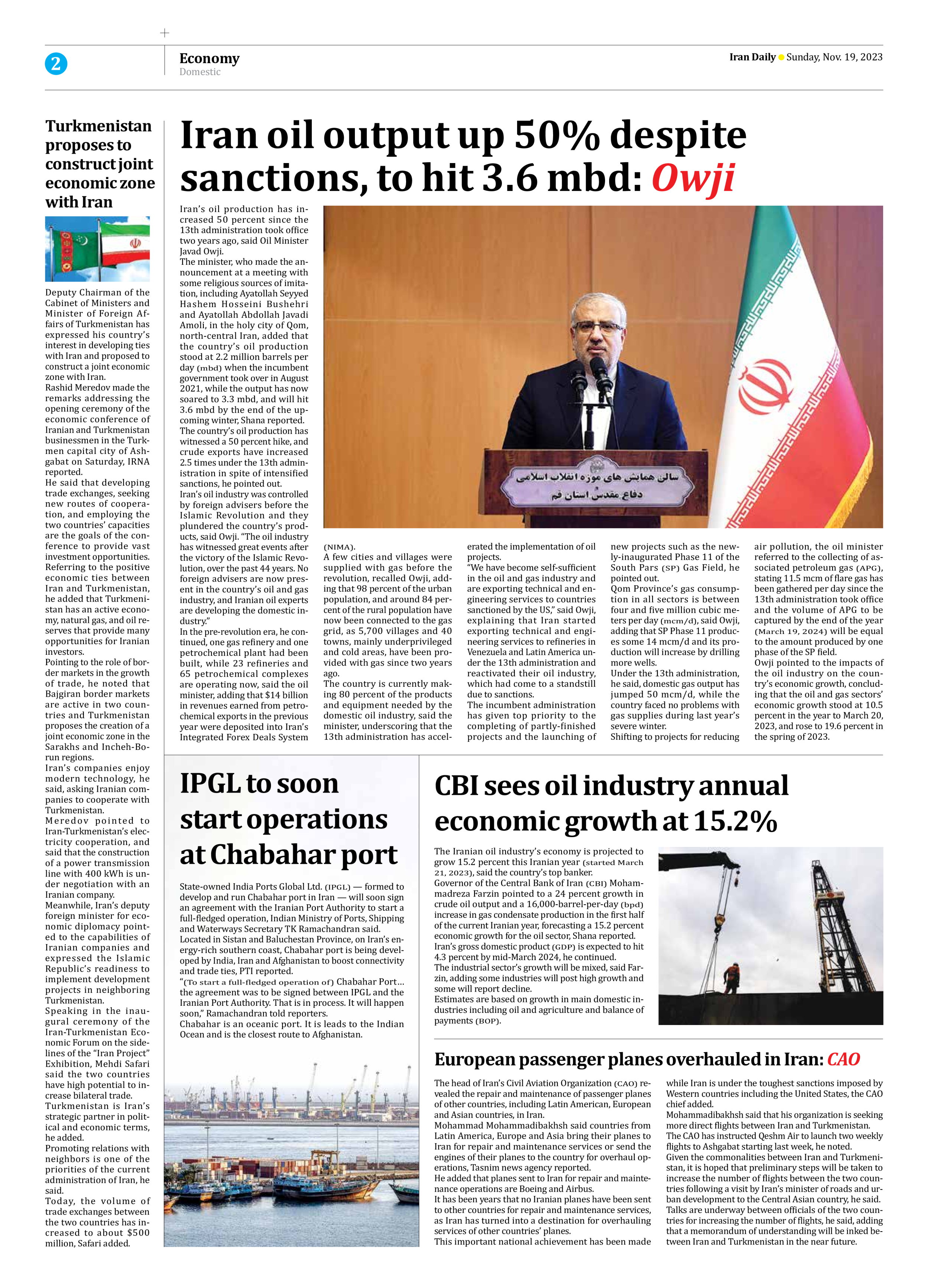
Iran oil output up 50% despite sanctions, to hit 3.6 mbd: Owji
Iran’s oil production has increased 50 percent since the 13th administration took office two years ago, said Oil Minister Javad Owji.
The minister, who made the announcement at a meeting with some religious sources of imitation, including Ayatollah Seyyed Hashem Hosseini Bushehri and Ayatollah Abdollah Javadi Amoli, in the holy city of Qom, north-central Iran, added that the country’s oil production stood at 2.2 million barrels per day (mbd) when the incumbent government took over in August 2021, while the output has now soared to 3.3 mbd, and will hit 3.6 mbd by the end of the upcoming winter, Shana reported.
The country’s oil production has witnessed a 50 percent hike, and crude exports have increased 2.5 times under the 13th administration in spite of intensified sanctions, he pointed out.
Iran’s oil industry was controlled by foreign advisers before the Islamic Revolution and they plundered the country’s products, said Owji. “The oil industry has witnessed great events after the victory of the Islamic Revolution, over the past 44 years. No foreign advisers are now present in the country’s oil and gas industry, and Iranian oil experts are developing the domestic industry.”
In the pre-revolution era, he continued, one gas refinery and one petrochemical plant had been built, while 23 refineries and 65 petrochemical complexes are operating now, said the oil minister, adding that $14 billion in revenues earned from petrochemical exports in the previous year were deposited into Iran’s Integrated Forex Deals System (NIMA).
A few cities and villages were supplied with gas before the revolution, recalled Owji, adding that 98 percent of the urban population, and around 84 percent of the rural population have now been connected to the gas grid, as 5,700 villages and 40 towns, mainly underprivileged and cold areas, have been provided with gas since two years ago.
The country is currently making 80 percent of the products and equipment needed by the domestic oil industry, said the minister, underscoring that the 13th administration has accelerated the implementation of oil projects.
“We have become self-sufficient in the oil and gas industry and are exporting technical and engineering services to countries sanctioned by the US,” said Owji, explaining that Iran started exporting technical and engineering services to refineries in Venezuela and Latin America under the 13th administration and reactivated their oil industry, which had come to a standstill due to sanctions.
The incumbent administration has given top priority to the completing of partly-finished projects and the launching of new projects such as the newly-inaugurated Phase 11 of the South Pars (SP) Gas Field, he pointed out.
Qom Province’s gas consumption in all sectors is between four and five million cubic meters per day (mcm/d), said Owji, adding that SP Phase 11 produces some 14 mcm/d and its production will increase by drilling more wells.
Under the 13th administration, he said, domestic gas output has jumped 50 mcm/d, while the country faced no problems with gas supplies during last year’s severe winter.
Shifting to projects for reducing air pollution, the oil minister referred to the collecting of associated petroleum gas (APG), stating 11.5 mcm of flare gas has been gathered per day since the 13th administration took office and the volume of APG to be captured by the end of the year (March 19, 2024) will be equal to the amount produced by one phase of the SP field.
Owji pointed to the impacts of the oil industry on the country’s economic growth, concluding that the oil and gas sectors’ economic growth stood at 10.5 percent in the year to March 20, 2023, and rose to 19.6 percent in the spring of 2023.







